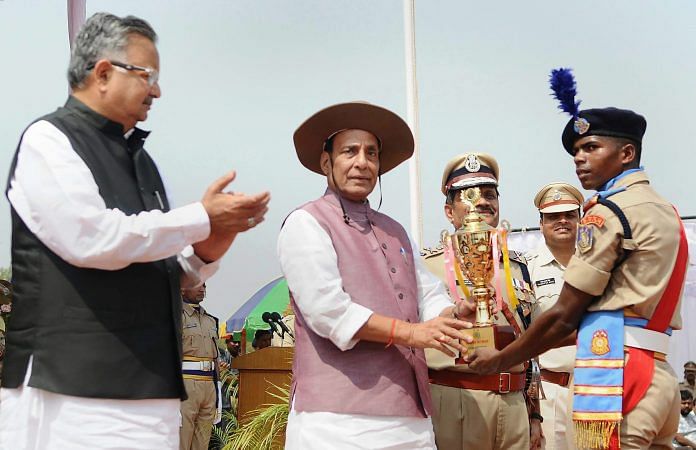In the 1990s, government raised the Rashtriya Rifles as a specialised counter-insurgency force in the Valley. Two-and-a-half decades later, the insurgency, fanned by support from Pakistan, still continues.
On 21 May 2018, the 241st battalion of the Central Reserve Police Force (CRPF) was raised at the Force’s anti-Naxal training school in Chhattisgarh amid much fanfare.
The union home minister attended the ceremony along with the chief minister of Chhattisgarh. The battalion has been nicknamed “Bastariya Warriors” because it comprises personnel drawn largely from the Bastar region, and is tasked with carrying out anti-Naxal operations in that area. The battalion is made up of 534 personnel, including 189 women.
The immediate advantage of such a battalion is that its personnel will be equipped with the linguistic skills and local knowledge needed to effectively operate in the area. These were the issues the CRPF was grappling with while fighting the Naxals who speak local dialect and can easily blend in. The hope is that the new battalion will form more reliable intelligence networks in the region.
The other advantage is that when such large numbers of Bastar youth are seen associated with the government through the CRPF, it will bolster the state’s image in the eyes of the locals. Most government initiatives in the area are viewed with suspicion because of Naxal propaganda. For instance, schools set up by the government are seen as staging posts for security forces, and road construction is viewed as providing communication lines for the forces. Such perceptions dilute the significance of infrastructural development in the area. In the long run, the battalion can be successful in weaning locals away from the Naxals.
However, such a battalion also raises some worrying issues. First, if funds are poured in to raise, train and equip a battalion for a specific area, then it seems like a step aimed at conflict management rather than conflict resolution. The government seems to be digging in for the long haul.
Second, is it an admission of failure of the Commando Battalion for Resolute Action (CoBRA), the specialised CRPF units currently leading the fight against the Naxals in Chhattisgarh, Maharashtra, Odisha and bordering areas? After all, if mere intelligence gathering or linguistic skills were the problem, locals could be recruited and dispersed as regular troops among the existing CRPF battalions in the region.
This step also reflects poorly on the existing coordination between the local police and the CRPF. The local police should be leading the fight, with the CRPF providing manpower for area domination and operations. If the CRPF has to develop its own local roots, then what does it say of the state armed police and the local police?
Third, will the “Bastariya Warriors” be effective in ending the Naxal violence? In the 1990s, the government had raised the Rashtriya Rifles as a specialised counter-insurgency force in the Kashmir valley. However, two-and-a-half decades later, the insurgency, fanned by support from Pakistan, still continues. This is a political failure and not a failure of the Rashtriya Rifles. But nobody will question the need for the continuance of such a force.
Such forces are a handy veil to cover up the failure of the political leadership. The government will, of course, say ‘Look, we have raised a specialised force’, and wash its hands off the whole thing.
Fourth, is it advisable to set locals against locals? The Salwa Judum, an irregular force of locals raised by the government to tackle Naxals in Chhattisgarh, attained notoriety for its alleged human rights violations and general lack of professionalism. The Supreme Court declared the force illegal in 2011. The “Bastariya Warriors” are, however, regular CRPF personnel and professionally trained.
Fifth, is there any guarantee that the Naxals will not carry out reprisals against the family members of the locally recruited troops? Given their dirty tactics and intimidation of the people, it would be a challenge for the Bastariya Warriors to operate without fear or favour in such an environment.
It is time to think of imaginative solutions rather than saturating disturbed areas with troops. The British realised this in Northern Ireland, and military presence was scaled down, and small teams of Special Air Service (SAS) troops were deployed incognito to carry out targeted, intelligence-based operations. The terrain in Bastar is different. It is an area of dense forests where Naxals operate in squads, which can easily disperse and assemble.
The “Bastriya Warriors” appears to be old wine in a new bottle. The solution needed is more political than military.
The author is a law student at the University of Delhi, and was earlier a research associate at Capital IQ.







No Sir. The campaign will be Unity in Diversity(the spirit of India) vs Communalism . It covers all.